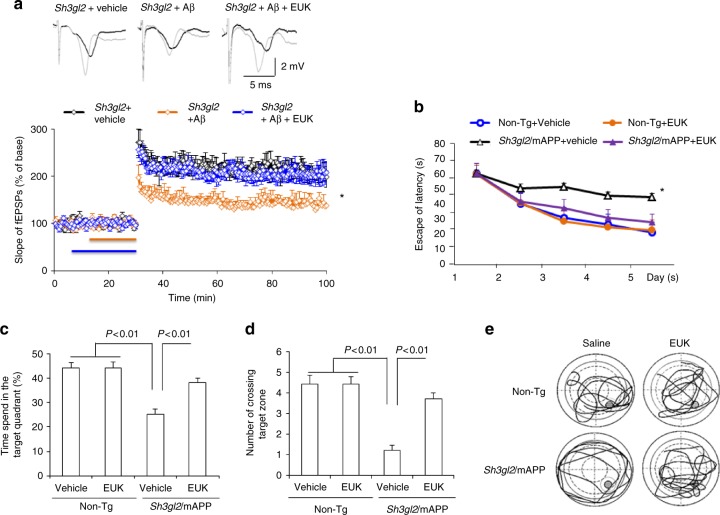Fig. 7.
Effect of ROS scavenger on EP/Aβ-mediated synaptic plasticity and spatial learning and memory impairment. a Hippocampal slices from 5-month-old to 6-month-old Tg Sh3gl2 mice were pretreated with EUK-134 (500 nM) for 5 min before Aβ perfusion (100 nM for 20 min), and then hippocampal CA3-CA1 LTP was recorded. Error bars represent s.e.m., n = 7–10 per group. *p < 0.01 (one-way ANOVA). Non-Tg and Tg Sh3gl2/mAPP mice were intraperitoneal injected with EUK-134 (2 mg/kg) once a day for 3 weeks and then performed a Morris water maze test at 5–5.5 months of age. Upper panel shows representative traces of fEPSP in slices with the indicated treatment before θ-burst stimulation (black line) and after 1 h (gray line). b Escape latencies in hidden platform during Morris water maze task training in indicated groups. Error bars represent s.e.m., n = 8–9 per group. *p < 0.01 (one-way ANOVA). c Time spent in the quadrant with the hidden platform and d mean number of crossings of the target during the probe test. e Representative searching traces during the probe test. Learning and memory were impaired in Tg Sh3gl2/mAPP mice compared to other groups, which was rescued by antioxidant EUK treatment. Data are shown as mean ± s.e.m., n = 8–9 mice per group (one-way ANOVA in c, d)

